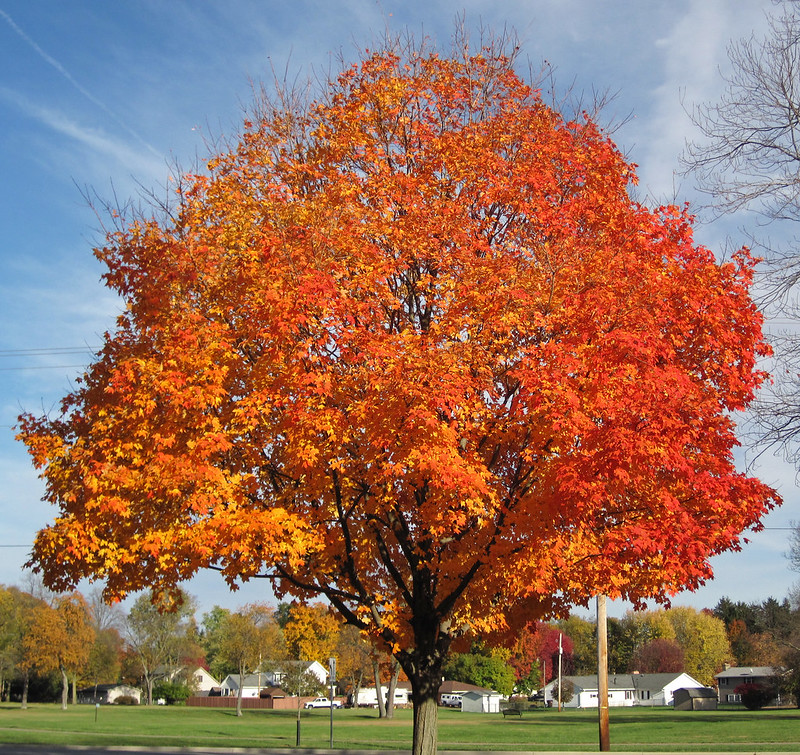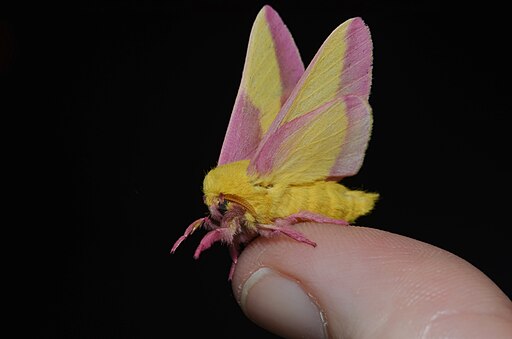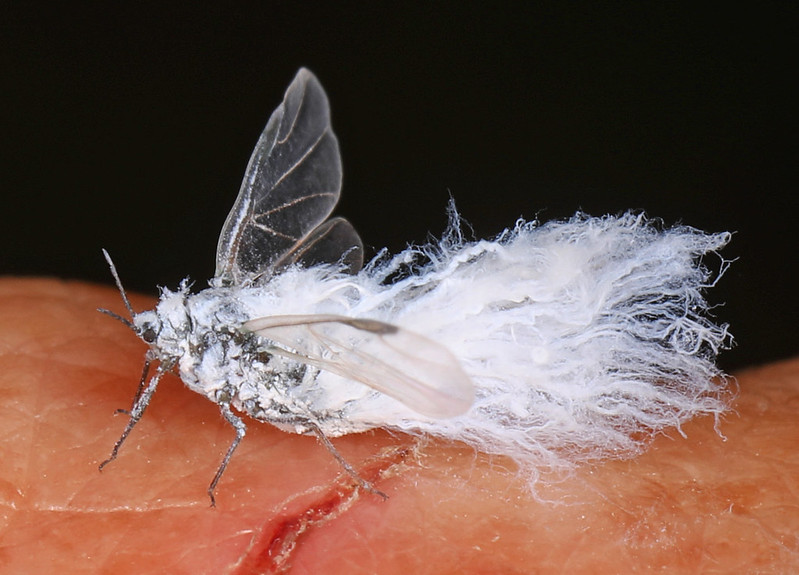
If you’re told to picture a pollinator garden, you’ll probably imagine a sunny patch of wildflowers and not necessarily a single big tree.
But although their flowers aren’t as showy as our native perennials, trees are hugely important host plants for a wide variety of butterflies and moths.
Native trees typically host way more species than all but just a couple of genera of herbaceous perennials, so they play a massive role in our goals of supporting diverse pollinators amid historic declines and habitat loss.
This host plant relationship means that their leaves serve as food for newly-hatched caterpillars, after adult butterflies and moths had laid their eggs there previously. This is a largely invisible process because it often happens high up in the tree canopy, and many of the caterpillars are tiny in size as well. So even if you don’t observe many caterpillars yourself, know that your trees are performing a crucial ecosystem service.
Trees also provide additional benefits for these lepidoptera (butterfly and moth species) insects, as they “provide butterflies protection during bad weather, a place for them to perch during the day, and a spot to roost at night” (source).
Maple trees are one of the most common sights across many regions of the United States, both in natural areas and yards and are a very common street tree as well. And fortunately for native plant enthusiasts, it’s one of the most productive host plants of our native hardwood trees.
Oaks are rightfully hailed as the top keystone tree for most ecoregions, but maples aren’t all that far behind in terms of the number of species that they host.
Which Butterfly and Moth Caterpillar Species Do Maple Trees Host?

Doug Tallamy is a leader in ongoing research on host plants, and he wrote the following on maples:
“Maples are widely used by inchworms (Geometridae) and relied on by the Rosy Maple Moth (Dryocampa rubicunda), the Oval-based Prominent (Peridea basitriens), the Retarded Dagger Moth (Acronicta rubicoma), the Orange-humped Maple Worm (Symmerista leucitys), the Maple Looper (Parallelia bistriaris), and the Baltimore Bomolocha (Bomolocha baltimoralis)” (Tallamy 2009). Another species is the Imperial Moth (Eacles imperialis), whose larvae feed on maple leaves but adults do not feed (source).
Species-level relationships are more difficult to find in any comprehensive way, but you can piece together many of the basics from a variety of sources. For one, the Cecropia Moth (Hyalophora cecropia) specifically favors Red Maple (source).
Silver maples specifically host the woolly alder aphid which get its name from the fluffy, white wax on its abdomens. They “lay their eggs in the crevices of Silver Maples, and the young feed on the maple leaves. Winged adults then fly to alder trees and form large colonies” (source).

Of course, not all insects will be present in all of the geographical territory covered by maples. To find more host species in your local area, you can use the National Wildlife Federation’s Native Plant Finder to find host plant species specific to your zip code. This is at the genus level, though, so it won’t specify which exactly host on a specific species you have or are considering planting.
In my area in SW Ohio, I get 273 species for maple trees, including the rosy maple moth, morning cloak, small-eyed sphinx, isabella tiger moth, and the eastern tiger swallowtail.
Specialists vs. Generalist Caterpillars That Host on Maple Trees
It’s also interesting and useful to look at the number of plant species that the caterpillar uses. Some are specialists that only can use maples and a very small number of other species as hosts (for my area, there are several with just two hosts).
Others can eat a wide variety of leaves, which makes them generalists. A good example of this for maples is the eastern tiger swallowtail which uses a variety of native trees and shrubs (including oaks, willows, crabapples, cherries/plums, and more).
Do These Caterpillars Eating Leaves Do Damage to Maple Trees?
For those newer to native plant gardening, the whole concept of intentionally using host plants can feel a little counterintuitive to traditional gardening where caterpillars eating your foliage are considered pests in need of eradication.
But even if you welcome these baby pollinators, it’s reasonable to wonder if they will do damage to your maple trees by eating its leaves. For the most part, it’s not anything to worry about, as these types of species interactions have been occurring for millions of years and the trees have evolved to handle it just fine.
Also, they will naturally attract their predators which keep populations in check. This means various types of ladybugs, beetles, lacewings, and parasitic wasps. For example, “red and silver maples can be host to an interesting looking scale insect, the cottony maple leaf scale. Usually, populations are kept in check by natural enemies, like lady beetles and parasitoid wasps” (source).
So by letting nature run its course and avoiding using insecticides or other chemical or natural solutions in your yard, species will balance each other out and your trees will remain completely healthy.
Do Maple Tree Flowers Support Adult Butterflies and Bees?
Earlier I mentioned that most trees don’t have showy flowers to compare to your favorite perennials, but many do have flowers that provide important early-season nectar for a variety of native bees as well as adult butterflies and moths.
In fact, many types of habitats aside from the familiar sunny meadow are vital for many bee and lepidoptera species, from shade gardens to the shade trees themselves.
Maples bloom early, from late February to April, which is a time when there is often not a whole lot else in bloom yet. Specifically, they provide nectar for mining, mason, small sweat, and cellophane bees (source). The silver maple is usually the first of the native maples to bloom in spring.
Leave the Leaves! The Maple Tree Leaf as Vital Habitat for Host Caterpillars
Finally, it’s worth mentioning that in order to support butterfly and moth caterpillars with your maple trees, the dead leaves are just as important as the living ones! Overwintering larvae use the fallen leaves to shelter for the winter and hide from predators. So whenever you can, try to leave as many of the leaves under your trees as you can. (And a large mulch ring around the tree is good for tree health and can also give you a good-sized area for leaving the leaves while still looking intentional and tidy.)
As with caterpillars feeding on the leaves, this is most often an invisible process too, as “Most of the larvae are so tiny they remain undetectable. We’re lucky to spy a moth cocoon spun to look like a twig hanging from a branch. It’s great camouflage from hungry insect-eating birds.”
After winter, you will see this process in action, as “you’ll notice spring migrating birds tossing their beaks through leaves to find an insect to snack on. This is a good thing. It means your yard is a healthy habitat. So, keep the leaves under trees and shrubs even if you feel compelled to rake them off the lawn to fit in with the neighbors” (source).
Leave a Reply